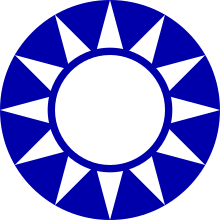
Chiang Kai-shek was a Chinese politician, revolutionary, and military leader. He was the head of the Nationalist Kuomintang (KMT) party, General of the National Revolutionary Army, known as Generalissimo, and the leader of the Republic of China (ROC) in mainland China from 1928 until 1949. After being defeated in the Chinese Civil War by the Chinese Communist Party (CCP) in 1949, he led the ROC on the island of Taiwan until his death in 1975.

The Kuomintang (KMT), also referred to as the Guomindang (GMD), the Nationalist Party of China (NPC) or the Chinese Nationalist Party (CNP), is a major political party in the Republic of China, initially based on the Chinese mainland and then in Taiwan since 1949. The KMT is a centre-right to right-wing party and the largest in the Pan-Blue Coalition. Its primary rival is the Democratic Progressive Party (DPP) and its allies in the Pan-Green Coalition. As of 2024, the KMT is the largest single party in the Legislative Yuan. The current chairman is Eric Chu.

The Hui people are an East Asian ethnoreligious group predominantly composed of Chinese-speaking adherents of Islam. They are distributed throughout China, mainly in the northwestern provinces and in the Zhongyuan region. According to the 2010 census, China is home to approximately 10.5 million Hui people. Outside China, the 170,000 Dungan people of Kazakhstan and Kyrgyzstan, Panthays in Myanmar, Hui Chin Haws in Thailand are also considered part of the Hui ethnicity.

Qinghai is an inland province in Northwestern China. It is the largest province of China by area and has the third smallest population. Its capital and largest city is Xining.

The Sino-Soviet Non-Aggression Pact was signed in Nanjing on August 21, 1937, between the Republic of China and the Soviet Union during the Second Sino-Japanese War. The pact went into effect on the day that it was signed and was registered in League of Nations Treaty Series on September 8, 1937.
The Ma clique or Ma family warlords is a collective name for a group of Hui warlords in Northwestern China who ruled the Chinese provinces of Qinghai, Gansu and Ningxia for 10 years from 1919 until 1928. Following the collapse of the Qing dynasty in 1912, the region came under Chinese Muslim warlord Ma Qi's control until the Northern Expedition by the Republic of China consolidated central control in 1928. There were three families in the Ma clique, each of them respectively controlled, parts of Gansu, Ningxia and Qinghai. The three most prominent members of the clique were Ma Bufang, Ma Hongkui, and Ma Hongbin, collectively known as the Xibei San Ma. Some contemporary accounts, such as Edgar Snow's, described the clique as the "Four Ma", adding Ma Bufang's brother Ma Buqing to the list of the top warlords. Other prominent Ma's included Ma Anliang, Ma Qi, Ma Lin, Ma Hu-shan, and Ma Zhongying.
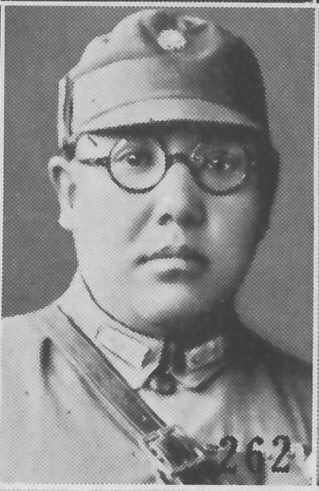
Ma Hongkui was a prominent muslim warlord in China during the Republic of China era, ruling the province of Ningxia. His rank was lieutenant general. His courtesy name was Shao-yun (少雲). In 1950, Hongkui migrated to the United States, where he lived until he died in 1970.

Ma Bufang (1903 – 31 July 1975) (traditional Chinese: 馬步芳; simplified Chinese: 马步芳; pinyin: Mǎ Bùfāng; Wade–Giles: Ma3 Pu4-fang1, Xiao'erjing: مَا بُفَانْ) was a prominent Muslim Ma clique warlord in China during the Republic of China era, ruling the province of Qinghai. His rank was lieutenant-general.

Ma Buqing (1901–1977) was a prominent Ma clique warlord in China during the Republic of China era, controlling armies in the province of Qinghai.

The Kuomintang (KMT) is a Chinese political party that ruled mainland China from 1927 to 1949 prior to its relocation to Taiwan as a result of the Chinese Civil War. The name of the party translates as "China's National People's Party" and was historically referred to as the Chinese Nationalists. The Party was initially founded on 23 August 1912, by Sun Yat-sen but dissolved in November 1913. It reformed on October 10, 1919, again led by Sun Yat-sen, and became the ruling party in China. After Sun's death, the party was dominated from 1927 to 1975 by Chiang Kai-shek. After the KMT lost the civil war with the Chinese Communist Party in 1949, the party retreated to Taiwan and remains a major political party of the Republic of China based in Taiwan.
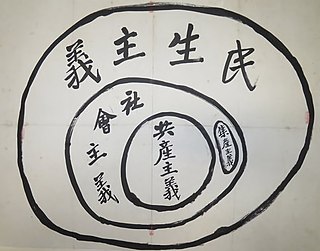
The historical Kuomintang socialist ideology is a form of socialist thought developed in mainland China during the early Republic of China. The Tongmenghui revolutionary organization led by Sun Yat-sen was the first to promote socialism in China.
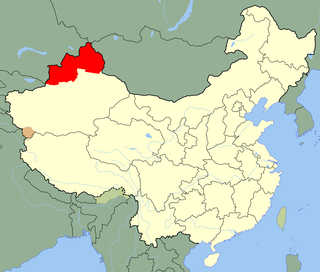
The Ili Rebellion was a separatist uprising by the Turkic peoples of northern Xinjiang against the Kuomintang government of the Republic of China, from 1944 to 1946. The Ili Rebellion began with the East Turkestan National Revolution, known in Chinese historiography as the Three Districts Revolution, which saw the establishment of the Second East Turkestan Republic. The leadership was dominated by Uyghurs but the population consisted mostly of Kazakhs.
Ma Chengxiang (1914–1991) was a Chinese Muslim general in the National Revolutionary Army. He was the son of Ma Qing (馬慶) and nephew of generals Ma Buqing and Ma Bufang. A daughter of Ma Buqing was married to him. He commanded Hui cavalry in Xinjiang, the 5th cavalry army. Ma was a member of the Chinese Nationalist Kuomintang party and a hardliner. Ma Chengxiang commanded the Xinjiang First Cavalry Division, which was formerly stationed in Gansu where it was known as the Fifth Cavalry Army.
The Muslim Conflict in Gansu broke out when a coalition of Muslim generals revolted against the Guominjun in 1927. Prominent among the rebels was Ma Tingxiang, the son of the General Ma Anliang, who received aid in the form of arms from Zhang Zuolin in Manchuria.
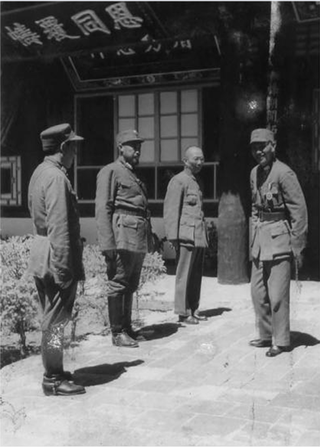
The Ma clique fought a series of military campaigns between 1917 and 1949 against unconquered Amchok and Ngolok (Golok) tribal Tibetan areas of Qinghai (Amdo), undertaken by two Hui commanders, Gen. Ma Qi and Gen. Ma Bufang, on behalf of the Beiyang and Kuomintang governments of the Republic of China. The campaigns lasted between 1917 and 1949. The conflict was spurred by multiple factors, notably for economic and socio-political reasons rather than by any racial or religious enmity.
Ma Liang was a Chinese Muslim General and a member of the Ma Clique.

Ma Zhongying, also Ma Chung-ying, nickname Commander Ga, was a Hui Chinese Muslim warlord during the Warlord era of China. His birth name was Ma Buying. Ma was a warlord of Gansu Province in China during the 1930s. His alliance with the Kuomintang (KMT) brought his predominantly Chinese Muslim troops under the control of the KMT as the New 36th Division with Ma Zhongying as its commander. He was ordered to overthrow Jin Shuren, the governor of Xinjiang. After several victories over provincial and White Russian forces, he attempted to expand his territory into southern Xinjiang by launching campaigns from his power base in Gansu, but was stopped by Xinjiang warlord Sheng Shicai with Soviet support in 1934.

Ma Biao (1885–1948) was a Chinese Muslim Ma Clique General in the National Revolutionary Army, and served under Ma Bufang, the Governor of Qinghai. He was a member of Ma Bufang's family, Ma Biao was the eldest son of Ma Haiqing 馬海清, who was the sixth younger brother of Ma Haiyan, the grandfather of Ma Bufang.
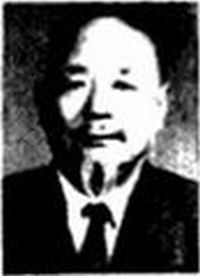
Han Youwen was an ethnic Salar Muslim General in the National Revolutionary Army of the Republic of China, born in Hualong Hui Autonomous County, Qinghai. His Muslim name was Muhammad Habibullah (穆罕默德·海比不拉海).

Chinese Muslims in the Second Sino-Japanese War were courted by both Chinese and Japanese generals but they tended to fight against the Japanese with or without the support of higher echelons of the other Chinese factions.
